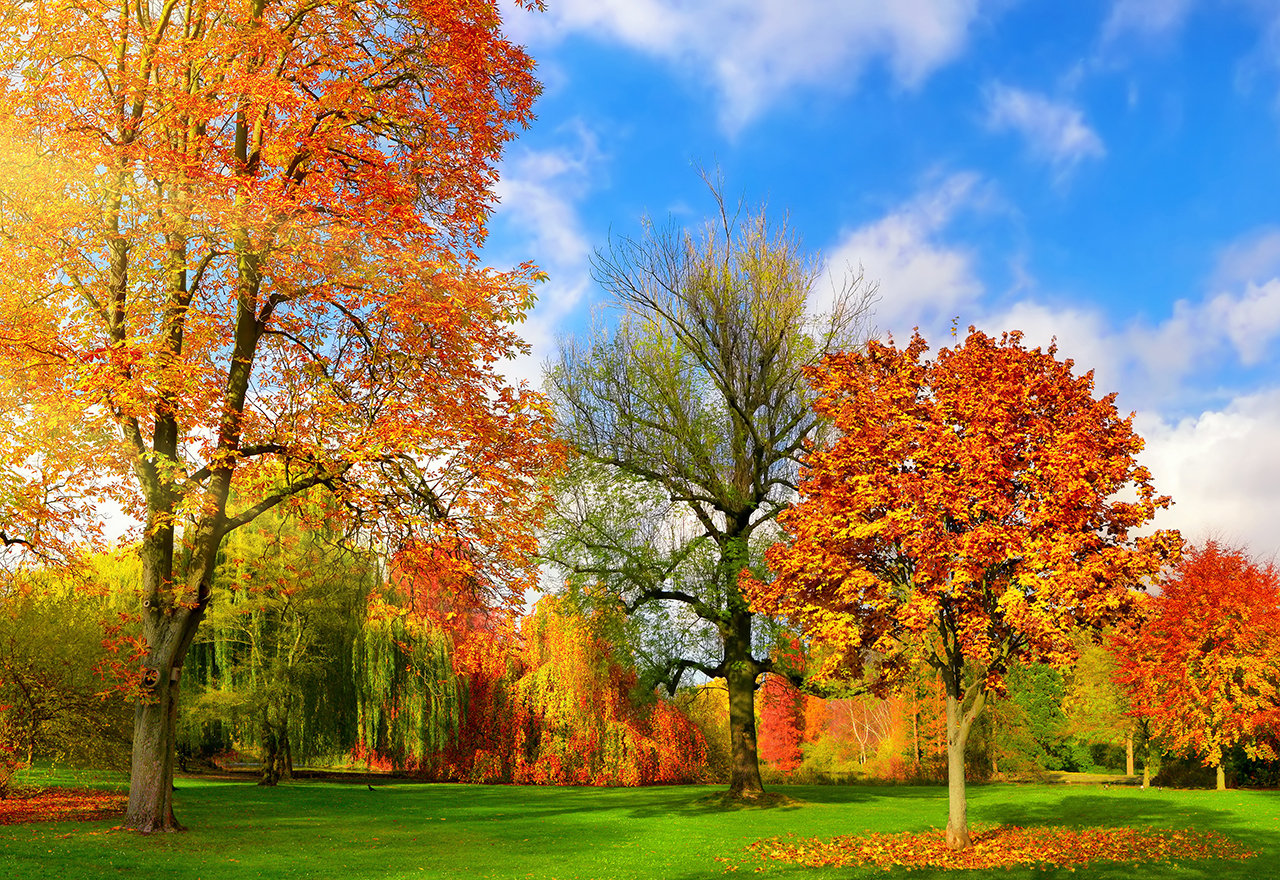Feeding Your Lawn in the Fall
by Maureen Wise, on November 23, 2021

We know that most people consider Spring and Summer to be the most important times of year to maintain and care for their lawns. In Autumn, most homeowners are more concerned about getting rid of fallen leaves and putting up Christmas decorations. We’d like to encourage you to keep paying attention to your lawn for a few more months!
Autumn Feeding
Just because temperatures are down and frost, or even snow, have cooled your family’s enthusiasm to be outside, your turfgrass is still growing. The Fall and into the Winter is when root development takes place for cool-season grasses, such as fescues, bluegrasses, and ryegrasses. These cool-season grasses grow into December, or even later, depending on temperatures and snow accumulation. Fertilizing your lawn will help that growth thrive even more. When you’re fertilizing, you’re feeding the soil, not the plants directly. This Fall fertilization isn’t working to grow healthy grass at that time – but is encouraging stronger roots. The soil itself isn’t frozen until there have been long periods of freezing temperatures, even if the air temperature is cool. That is when grass really goes dormant for the Winter.

Experts Agree: Fall Fertilization is Best
Not so sure? The Ohio State University Sports Turf Management (College of Food, Agricultural and Environmental Studies) states that “the application of fertilizers in late Fall results in turfgrass that is visibly greener in color through Spring/Summer of the following year, and without the excessive shoot growth that typically may occur with higher than necessary fertilization in the Spring. More importantly, overall plant/turfgrass physiological health is improved for the following season.” They’re not talking about Winter or dormant fertilization, but feeding the soil from September into December. They’ve found that a late fertilization can lead to a “green-up” as much as six weeks earlier, giving your grass a head start against weeds. Additionally, the Virginia Cooperation run by Virginia Tech and Virginia State University actually says that “Fall is the OPTIMAL time to aggressively fertilize cool-season turfgrasses.” They used the so enthusiastic all caps in their article, not us. They say that cooler temperatures and shorter days are a great time for grasses to grow roots and store energy for the Winter. And lastly, Michigan State University’s MSU Extension states that “Fertilizing in the Fall will result in a moderate top-growth response and give the turf some extra energy to develop roots and fill in the voids.” They encourage homeowners to use a fertilizer that releases nitrogen slowly (like our organic fertilizers) instead of fast, because it would encourage too much top-growth (the grass blades), and not as much root growth.
Never a Bad Time to Fight Weeds
Fall is also a great time to treat for perennial weeds. These undesirable plants are weakened this time of year and hitting them with some organic weed killer will ensure that they won’t be around in the Spring. We like pet and kid-safe Burnout (which uses clove oil and lemon juice) and Captain Jack's Lawnweed Brew (iron-based). They are both available in our online store. We are also happy to provide Natural Weed Buster Treatments if we are in your area. Additionally, we usually see people still mowing into November. Lawn maintenance continues when the temperatures dip and you need to wear a coat!












